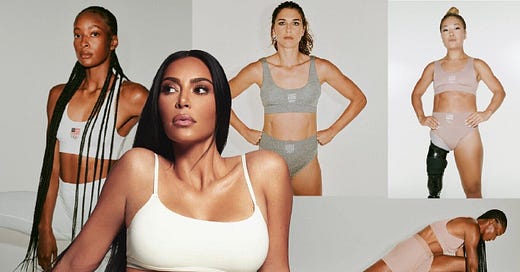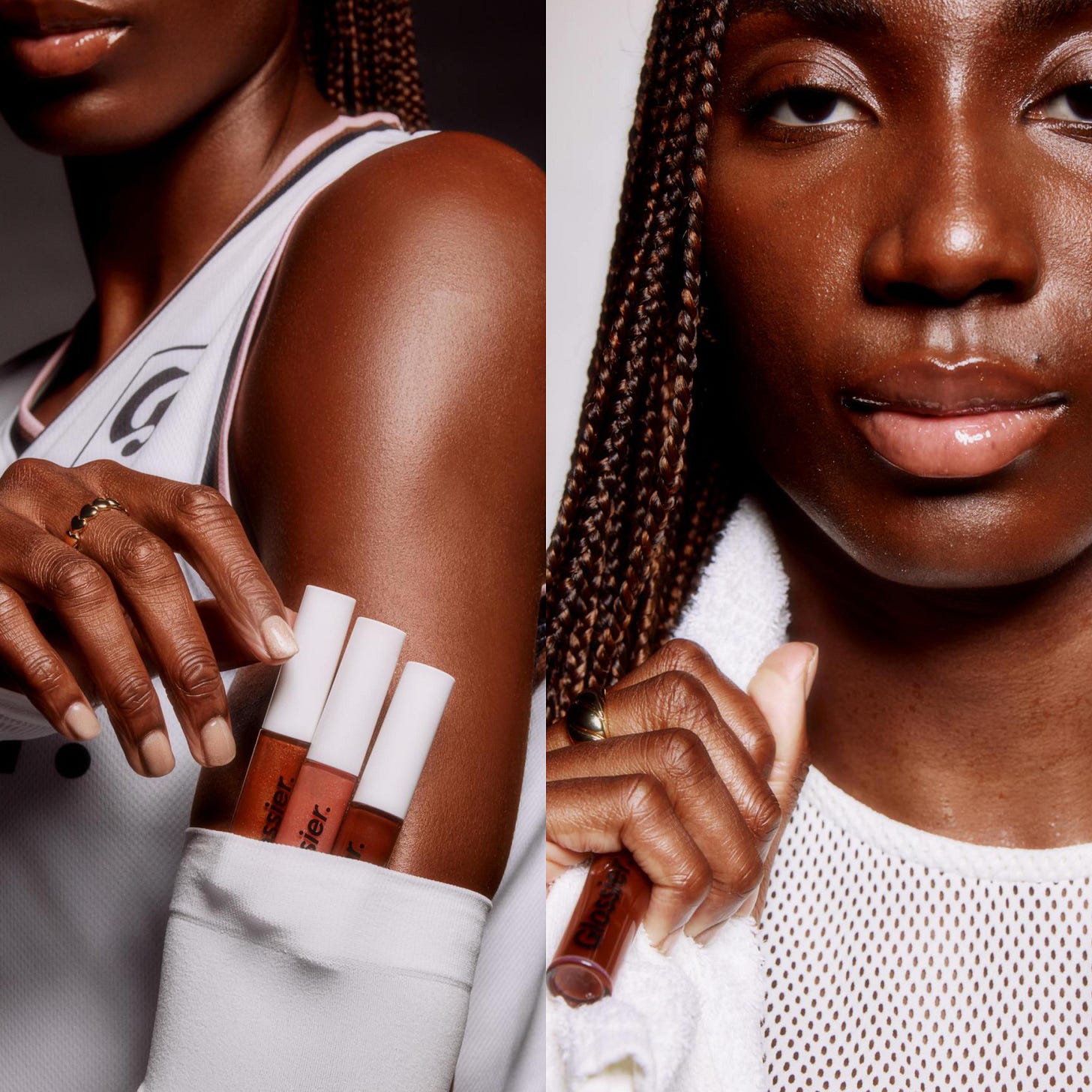Yeah, the Girls!
From sideline to spotlight: What happens when the world starts paying attention to women’s sport.
You’d be forgiven for thinking it began with the Matildas. That fever-pitch World Cup run, the surge of national pride, the collective breath held through penalty shootouts that packed out pubs and turned up the heat in group chats, where football, for once, finally, belonged to everyone. But what unfolded wasn’t confined to that singular high. It marked the acceleration of a movement already in motion. A reshuffling of attention, investment and cultural weight. What had long simmered just beneath the surface, from grassroots talent to global fan communities, found its flashpoint, and in doing so, redrew the boundaries of who gets to headline, and why. In other words: women’s sport beautifully, spectacularly, triumphantly entered the chat.
To call it a surge in popularity would be to miss the point entirely. What’s unfolding isn’t a fluke or a feel-good uptick: it’s a structural shift, years in the making and now impossible to ignore. Women’s sport is commanding serious real estate: on screens, in stadiums, across sponsorship decks and in the hearts of fans who aren’t tuning in out of obligation, but out of genuine, growing obsession.
The signs are everywhere, if you’re looking. In the US, this year’s NCAA Women’s Basketball Final didn’t just draw more eyes than the men’s — it dominated the discourse, eclipsing its counterpart in hype, headlines and ticket sales. The WNBA is clocking its highest viewership in decades, buoyed by a new generation of athletes who are as comfortable on the court as they are in front of a camera, leading campaigns, setting trends and rewriting the visual language of sport in real time. Closer to home, AFLW continues its slow ascent, building a loyal base that is sticking around. Women’s sport is here to stay.
The Tipping Point
Sponsoring women’s sport used to sit at the bottom of the marketing budget. Polite, predictable, largely invisible.
The perfect example of a box-ticking exercise. But that model doesn’t hold anymore. Cultural capital has shifted. Audiences are showing up, and not just as fans but as communities and consumers with conviction.
Far from safe, today’s campaigns are smart. Athlete-led, story-driven and embedded in culture. Think SKIMS co-designing for Team USA. Think Caitlin Clark locking in a $28 million Nike deal and a signature shoe before even playing her first WNBA game. These aren’t one-offs. They’re repositionings.
In days past, brands seemed to treat women’s sport like charity. What we’re seeing now is a long-overdue correction: brands building meaning, reach and aesthetic language through the lens of women’s sport. And yes, that was the Glossier logo emblazoned courtside at the WNBA you saw. Unexpected and extremely iconic.
The Brands Getting It Right
The most compelling partnerships today go beyond visibility. They’re built on clarity, co-creation and relevance. In encouraging news, the list is long.
SKIMS x Team USA (Nike): A moment that expanded what performancewear could mean — technically sound, culturally resonant, unapologetically feminine.
Glossier x WNBA: A brand better known for shelfies than sports found unexpected alignment by recognising that strength and softness aren’t opposites.
Good American x Angel Reese: Swagger, skill and story in a single frame. The athlete as a fashion icon, not just an ambassador.
Adidas x Mary Fowler: A campaign that leaned into mood, aesthetic and mystique. No slogans, just pure style.
New Balance x Coco Gauff: Not just signing talent, betting on her early, building something lasting, and meeting Gen Z exactly where they are.
Oakley x WNBA: Precision optics meet on-court grit. Oakley’s selective athlete collaborations, like with Diamond DeShields, show how strategic alignment can build edge without a megaphone.
Caitlin Clark x Nike: $28M and a signature shoe before her rookie season. Not a deal, a coronation.
Alo Yoga x Olympians: A pivot from pose to power. Alo’s athlete-facing content and campaign casting signal a shift from aesthetic to athletic fluency.
Lululemon x Canadian Olympic Team: Kit as cultural artefact. As official outfitters of Team Canada, Lululemon blended performance with visual poetry — sculptural, sleek, designed to be remembered.
Gatorade x Serena Williams: Enduring alignment. From Beyoncé-narrated ads to legacy-driven narratives, Gatorade has consistently positioned Serena as both athlete and cultural force.
Why Women’s Sport Works
The audience is growing. The engagement is deep. But the real differentiator? Women’s sport comes with a built-in sense of meaning. It moves beyond the spectacle. It’s a story of ambition, equity, visibility earned the hard way. It’s where athlete becomes icon, and where the icon often comes with a second career: as designer, podcaster, investor, mother and activist. The range is unmatched. The aesthetic is evolving. And the storytelling is already magnetic. For brands, this is a rare opportunity.
A space where feminism, fandom, fashion and function intersect, charged with purpose and ready-made cultural weight.
Rule 4: Rewriting the Model
Rather than borrowing from the men’s playbook, these brands are crafting something different. Less about dominance, more about dimensionality. Less bombast, more resonance. Brands that get it are designing around identity, not ego.
SKIMS x Nike: Made compressionwear emotional. Changed the visuals of elite prep.
Glossier x WNBA: Didn’t sideline femininity, they used it as a source of power.
Caitlin Clark x Nike: Built for her, and only her. A product of personality, not demographics.
These campaigns succeed because they allow room for contradiction: elegance and aggression, aesthetics and athleticism. They make space for nuance. And in doing so, they make space for new forms of aspiration.
Final Word: The Moment Has Already Moved
This moment builds on a shift that’s already well underway. The most culturally astute brands have stopped waiting to be told when women’s sport is ready. They’re already there, investing, designing, collaborating. What’s unfolding across courts, fields and timelines is redefining the cultural landscape, shaping how ambition, influence and identity are expressed, shared and celebrated. For the audiences who show up. For the athletes who define a new kind of influence. And for the brands brave enough to be early.
It’s safe to say women’s sport isn’t the next big thing. It is the thing.
Where cultural capital is being minted, stories are being shaped and communities are being built in real time. Smart brands are already on the field. The rest? They’re still in the locker room, wondering why no one’s watching their ad.
Subscribe to Public Opinion for more brand truth bombs, spicy takes, and the sharp, no-fluff insights founders actually use to win.
Public Opinion is where we talk. Smack Bang is where we do. Come see what we’ve been building →smackbang.co








I’m soooo excited for this